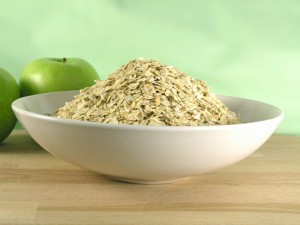We have heard it all: low carb, high carb, carb cycling, zero carb diets. Each one promising to get us the fat-loss results we seek. With the plethora of information out there, it is hard to know as an average consumer, what will yield the best results.
Before beginning any type of diet or macronutrient manipulation, it is important to remember that the end-goal should be to lose only fat while maintaining muscle. It is easy to lose weight if you aren’t afraid of losing muscle: simply stop eating and do long distance jogging everyday. However, from a metabolic perspective, the loss of muscle is devastating, as it will slow fat-loss results even further. So with the goal of muscle preservation in mind, what is the best way to manipulate carbs for fat loss?
Here are my 10 Hard & Fast Rules for Carbohydrates and Fat Loss, let me know what you think!
1: Cutting dietary carbohydrates to zero is not an option. A certain amount of sugar is needed to help maintain, and more importantly, build muscle. The muscle-building process at the biochemical level depends on not only having the amino acids from protein available, but the path itself is partly catalyzed by insulin, a hormone that is released upon consumption of carbohydrates. The use of carbohydrates to maximize muscle building while minimizing fat storage will depend on choosing the right carbs, eating them at optimal times and in the correct amounts.
2: #1 Best choice carb is vegetables. Yes, they are technically considered carbs, though most are low enough on the glycemic index (a measure of how fast sugar is absorbed into the blood) that their metabolic impact is negligible. Thus all leafy greens and similarly non-starchy veggies can be eaten liberally and are optimal carb choices for fat loss. Starchy veggies like corn, peas, beans, turnips, potatoes, chickpeas and carrots should be considered along with whole grains in terms of their metabolic impact (see below).
3: Monitor secondary carbs including whole grains and starchy veggies. Carb-heavier veggies and grains like oatmeal, cereal, granola, rice, quinoa, whole wheat bread and pastas need to be monitored because they cause an exaggerated spike in blood sugar if eaten too frequently, in larger portions or at less-advantageous times. A spike in blood sugar will release excess insulin, helping to convert and store excess carbs as fat. Best complex carbohydrate choices are ones that will minimize fat storage. They also contain higher amounts of fiber (relative to total carb) to slow absorption into the blood and increase satiety. If you MUST have bread, here is one we love!
4: Pay attention to gluten. Some people may need to be aware of gluten-containing grains like whole wheat breads, pastas and cereals since they can cause slight to moderate allergic reactions in people who are susceptible. This kind of metabolic dysfunction can disrupt the ability to burn fat. Instead, try to choose mostly hypoallergenic carbohydrates like yams, potatoes, brown rice, quinoa, beans and starchy veggies. Fruits like melon, apples, pears and berries are also great carb choices.
5: Carb-timing is key: The careful consideration of carb timing along with portion size will impact whether fat is stored or burned. For instance, consuming a huge starchy meal immediately before bed will devastate fat loss efforts. But eating the right starches at optimal times can help with muscle building and fat burning.
6: Starchy carbs are best earlier in the day. Eat 5-6 small “meals” throughout the day, spaced by 2-3 hours, rather than 3 larger square meals. The idea behind this is to maintain an elevated metabolism, never reaching the point at which the body responds as though it is starving, leading to fat preservation. This way of eating ensures that the individual is never too hungry nor too full throughout the day, eating just enough to take away the feeling of hunger and get the individual through the next 3 hours. For best fat-loss results, the first 2-4 meals (depending on your fat loss goals) should contain a starchy carbohydrate choice in a portion size that will not lead to “spillover” fat storage. Eating starchy carbs earlier in the day will assure that they will be used for energy during daily activities, rather than towards storage when eaten closer to bed. For optimal fat loss, the final 1-2 meals of the day should contain only lean protein and non-starchy vegetables.
7: Pay attention to portion sizes. Examples of appropriate serving sizes of starchy carbs include a ½ cup cooked brown rice, ½ medium sweet potato or 1 cup cooked old-fashioned oatmeal. Be sure to always eat these alongside a lean protein source to slow absorption further. Simple sugars and refined grains are ok as a treat every once in a while, not an everyday occurrence. Metabolic Effect advocates 3 bites of sweets only.
8: Eat carbs post-workout. One of the best times to each starchy carbs (and even more refined carbs) is immediately post-workout. In this 60-minute window, an individual can even eat higher glycemic index carbs (alongside protein) such as bananas, fruit juice, honey, white rice and bread. These choices will quicken the release and amount of insulin, which in this unique case will go almost exclusively towards muscle reparation and recovery, rather than fat storage.
9: Individualize your carb intake. Carb intake should be manipulated individually based on a person’s fat loss goals, specific energy needs and daily activity level. For example, for someone who wants to lose a lot of fat or quickly, they should cut back on the number of meals containing starchy carbs. However, realize that sometimes cutting carbs too much can lead to feelings of low energy, cravings, hunger and irritability. For optimal fat loss, monitor these feelings as you slowly cut down on starchy carbs at meals and adjust accordingly. However, for someone who is interested in performance goals, like running a marathon, they will have to increase carbs to meet the needs of their daily activity level as to preserve muscle. However, on non-training days, carbs should be monitored and probably decreased slightly.
10: Remember your fat-loss goals. Keep in mind that most overweight people who want to lose fat should not be as concerned about performance and feeling perfectly energetic all of the time. These are secondary concerns that will alleviate with successful fat loss. A lower-carb diet for someone with a lot of fat to lose will force the body to pull from fat stores during activity, rather than using the just-consumed carbs for energy. Once this person begins to lose fat, they will automatically feel less lethargic. For an overweight or obese adult, losing fat should be the number one priority, and upon success of that, everything else will fall into place.
If you feel like you need more of an individualized eating plan to achieve your fat-loss goals, contact Jill to sign up for a customized 12-week Nutrition Plan :)



